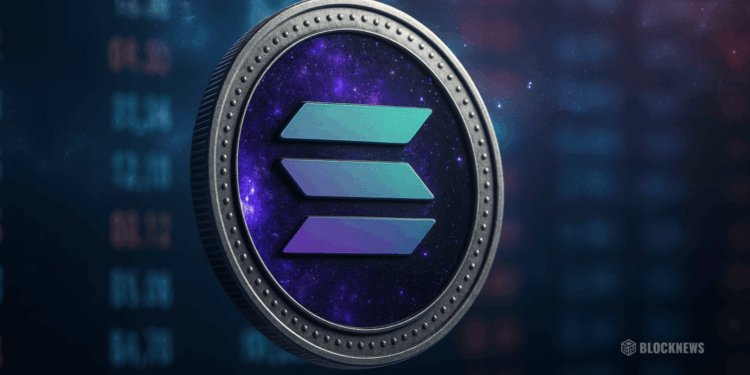- Solana delivers sub-second confirmations and near-zero fees, with Proof of History and parallel execution at its core.
- $SOL powers fees, staking, and security while benefiting from fee burns and rising demand during high activity.
- Firedancer boosts reliability, while memecoin culture, DeFi, NFTs, and gaming expand Solana’s ecosystem for the next bull run.
Solana isn’t just fast—it’s built for it. Most chains argue about throughput; Solana re-architected the whole stack so blocks land in a blink, fees feel like pocket lint, and apps actually behave like apps. Proof of History timestamps events ahead of time, validators execute in parallel, and the end result is sub-second confirmations that make “did my tx go through?” feel like ancient history. And now there’s Firedancer—an entirely separate validator client from Jump Crypto—rolling in to turn raw speed into sturdier reliability. Less single-client risk, more headroom, more ooomph.
Welcome to JRNY TV (article edition). No fluff, just the good stuff. Here’s the full Solana breakdown: what the network is, how $SOL works day to day, where the roadmap’s heading (yes, Firedancer), and why memecoins on Solana have hijacked the culture and the order books.
$SOL, Under The Hood
$SOL pays for computation, storage, and priority. Every transaction comes with a base fee; in congestion, you can tack on a small priority fee to hop the line. Even then, we’re talking pennies? No—fractions of a cent. That’s why Solana apps feel… instant. There’s also “rent” for long-lived account state so storage has an actual economic cost. Together, these keep spam down without wrecking UX.
Security’s proof-of-stake. Validators bond SOL; delegators point SOL at validators and share rewards. Yields usually sit mid-single to low-double digits (depends on validator commission + MEV/priority-fee capture). A big chunk of the total supply is staked, which helps anchor safety and liveness. So SOL isn’t only gas—it’s the capital that backstops consensus, earning issuance and fee rewards when staked to reliable operators.
Tokenomics? Inflation starts a bit above ~4% and decays ~15% per year toward a long-term rate. Part of every fee is burned, the rest goes to block leaders. Circulating supply moves with emissions, staking, and those burns. Punchline: as usage ramps, fee burn + demand for priority bandwidth + staking appetite pull against issuance. Usage = pressure. Good pressure.
Finally, SOL is the settlement layer for the app economy: DeFi, NFTs, payments, gaming, and LSTs so you can stay liquid while staked. More validators + better geo spread through 2025, plus client diversity, ties SOL’s roles—gas, stake, security, priority—to network health in real time. When mints spike or trading goes haywire, you feel it immediately in fee markets and staking flows.
What Solana Wants and How it Plans to Get There
Goal #1: Speed at mainstream scale. The mission is simple: support thousands of apps and millions of users directly on L1—no maze of rollups just to buy a coffee. Proof of History + high-performance validators = internet-like UX for decentralized apps.
Goal #2: Reliability. Yes, there were outages. The community wants that rep gone. Firedancer is central here: a fully independent client that aims for more fault tolerance, multi-million TPS ceilings (lab conditions, but still), and less reliance on one codebase. Multiple clients = healthier decentralization.
Goal #3: Builders first. Grants, hackathons, accelerators—Solana’s been aggressive about tooling and onboarding. Parallel execution + cheap fees let teams actually ship. That’s why DeFi, gaming, NFTs, and even DePIN (physical infrastructure) keep choosing SOL. The milestone to watch: a broader base of independent devs with the tools to go toe-to-toe with anything on Ethereum.
Goal #4: Culture. Solana’s leaning into the retail zeitgeist. Memecoins via Pump.fun. NFT waves (Mad Lads, etc.). The strategy is “culture + performance.” Capture serious DeFi liquidity and casual users who come for memes and stay for the markets. That combo is rare, and sticky.
The Bullish Case
UX wins markets. Sub-second finality and sub-cent fees are not cute details; they’re existential advantages. When users don’t have to count gas or wait forever, they come back tomorrow. In bull cycles, that UX gulf widens. People won’t tolerate slow or pricey chains once they’ve felt instant.
Ecosystem breadth. After the FTX hangover, Solana rebuilt—and then some. Daily users up. Dev participation up. DeFi TVL grinding higher. Gaming and NFT infra alive. Helium, Render, and other at-scale projects chose SOL for throughput. This isn’t a single-use chain; it’s a base layer for multiple industries that need speed.
Token flywheel. Fees get partially burned. Staking is high. Activity rises → more fees burned → tighter net issuance → better token dynamics. And because priority fees are still cheap, frenetic activity doesn’t crush retail. It rewards it.
Culture prints liquidity. Memecoins, creators, and degen flow give Solana a gravitational pull most chains envy. Media coverage follows the heat; heat attracts builders; builders ship products; products keep users. It’s not just “fun,” it’s a funnel.
The Memecoin Machine: Love it or Roll Your Eyes… it Works
Let’s be honest: memecoins are gasoline on Solana’s growth. Pump.fun turned SOL into the default launchpad—thousands of tokens a day, fees spiking, timelines melting. Why here? Because you can mint, trade, arb, and rage-quit fast without dropping $30 on gas for a tiny flip. High-frequency speculation actually makes sense when fees are fractions of a cent.
This matters for SOL itself. Every mint, swap, LP add/remove? Paid in SOL. Activity drives demand and burns supply. Where Ethereum’s gas can price out small fish, Solana invites them all in—and suddenly you’ve got the world’s biggest memecoin arcade humming 24/7.
Also: it’s a gateway. Users show up for the memes and stay for DeFi vaults, NFT markets, perps, games. Attention turns into retention. That attention also cements Solana’s brand as crypto’s cultural hub this cycle. Last time we had “DeFi Summer” and the 2021 NFT boom; now it might be Solana’s memecoin season dragging half the internet on-chain. Chaotic? Yes. Effective? Also yes.
Firedancer & Friends: The Boring Stuff that Wins Long-term
Client diversity is the unsexy backbone of real networks. Firedancer being built by an entirely different team means fewer single points of failure, higher performance ceilings, and more parallelization opportunities in the pipeline. Combine that with better validator hardware guidance, networking improvements, and ongoing runtime optimizations and you get… headroom. The kind that handles the next +10x user spike without sweating through your shirt.
Where Does SOL go From Here?
Solana is no longer “the fast one that sometimes hiccups.” It’s evolving into a high-throughput settlement layer with culture. Proof of History delivers speed, Firedancer shores up resilience, and the app layer spans DeFi → NFTs → gaming → DePIN. Meanwhile, the memecoin vortex keeps flooding the top of the funnel with new users and, frankly, new money.
$SOL ties it all together: pays for transactions, secures consensus via staking, accrues value as activity drives fee burn and priority demand. In a proper bull, when chains get stress-tested by real traffic, that feedback loop can get spicy—fast.
Bottom line
Solana is where infrastructure meets vibe. If the market goes full risk-on and usage explodes (memes, games, perps, the whole circus), SOL sits right in the blast zone—by design. Not financial advice, you know the drill. But if you’re mapping which networks could define the cycle, Solana’s squarely on that short list.
We’ll be watching—because if the next run hits like the last one (or harder), $SOL won’t just be “fast.” It’ll be the lane everyone’s merging into.














